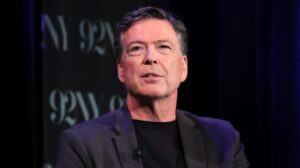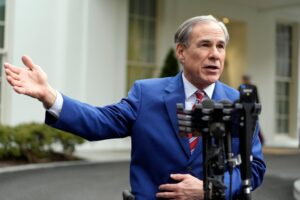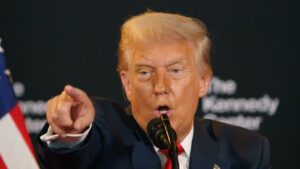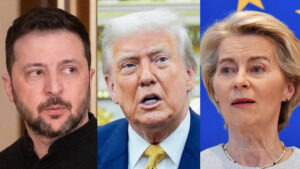Politics
They don’t like Trump. But they really, really like Vance.

Since before former President Donald Trump announced Sen. JD Vance of Ohio as his running mate, conventional wisdom has held that this wasn’t a great pick. Vance is “historically unpopular,” Democrats have charged, and even some Republicans have been unenthusiastic.
Yet there’s a group of voters for whom Vance, not Trump, is the GOP ticket’s attraction — its sole attraction. These never-Trump maybe-Vance voters aren’t numerous, and they may not yet know how they’ll vote. But in a close race, their decisions could make a difference.
I stumbled upon this group by chance: I happen to know a few people thinking this way in real life. When I sketched the voter profile on Substack, the response was swift and surprising, both for me and for voters who didn’t realize there were others like them. This is a small sampling and not a scientific poll, mind you, but the cumulative nature of the collected testimonials reveals a certain type. “Dang, you described me perfectly here,” commented Thomas, an evangelical dad from Georgia.
These never-Trump maybe-Vance voters aren’t numerous. But in a close race, their decisions could make a difference.
Like Thomas, typical never-Trump maybe-Vance voters are men. They’re millennials, or perhaps younger Gen X or older Gen Z. They’re married fathers (or want to be) who went to college and have white-collar jobs. And they’re churchgoing, but probably not in the charismatic stream of Protestantism where Trump is the subject of devotion and prophecy.
Crucially, these voters have all the moral objections and gut aversion to Trump that conservative Christians were expected to have in 2016. They likely don’t call themselves never-Trumpers and aren’t preoccupied with criticizing the former president as self-identified never-Trumpers tend to be. But they’ve never voted for Trump, didn’t like him in office and don’t want him re-elected.
Vance, however, is intriguing for them, and not only on policy. With some issues, mostly around trade and labor, Vance’s policies may actually be a drawback. Other positions, like his skepticism of U.S. military intervention abroad, might be pluses. But the big draw is Vance’s orientation around fatherhood and family, the way he links children and the American dream and his clear interest in pronatalist family policy and fertility rates.
Vance’s views on “the value of family resonate strongly with me,” said Eddie Becker, who attends a nondenominational church and expressed dismay over ongoing Trump support among fellow Christians and Republicans. “Aside from snarky ‘childless cat ladies’-type remarks,” Becker said of Vance, “I believe he does care about families and values children.”
For Christina in Boise, Idaho, who told me she fits this voter profile except for her sex, Vance’s disparagement of “childless cat ladies” merely signaled his seriousness about family. “I admire his love of his wife, children, Mamaw and his faith,” she said. “I see people balk at the mere idea of children, and this scares me.” In comparison, for her, Vance “is spot on.”
How Vance talks about family is also part of why these voters identify with him, which is a significant element of his appeal. Rob Spangler, a Maryland Presbyterian and father of four, highlighted that sense of identification when explaining to me his interest in Vance. Thomas added that watching Vance “is the first time I’ve seen someone in politics and thought, ‘That could be me.’”
Beyond the family vibes, some of this alignment is as simple as commonalities of age and stage: Vance is a young father and the first millennial on a major-party ticket after decades of boomer dominance. But that level of resonance could’ve happened with any peer-aged candidate, like Florida Gov. Ron DeSantis or Vivek Ramaswamy. These voters’ affinity for Vance goes deeper.
Vance is a young father and the first millennial on a major party ticket after decades of boomer dominance.
Like them, Vance is bookish and speaks seriously about his Christian faith. He’s the first viable contender for high office with whom they’d like to have a beer. In Vance, they see someone — in starkest contrast to Trump — who could be a friend under other circumstances. Several told me that when Vance is attacked as “weird,” they bristle a bit. If he’s weird, they’re weird, too.
It’s hard to say how many never-Trump maybe-Vance voters there are. Maybe the most useful data comes from a Cygnal survey last month of 1,500 likely voters. In most demographics, including unmarried men and men who didn’t go to college, Trump’s favorability ratings were statistically identical to or higher than Vance’s.
Among married men and men who went to college, however, Vance had a more favorable rating by a 4- to 5-percentage-point margin. Cygnal also isolated answers from “double haters,” the small (and shrinking) subset of voters who reject both major-party candidates. For them, Trump’s favorability sits at zero, but Vance’s is as high as 33%.
These aren’t large numbers. I don’t think this group numbers in the millions, not even at the national scale. But that polling suggests there could be enough never-Trump maybe-Vance voters for their decisions to matter in the five states, as of this writing, with less than 1-point gaps in the presidential polls.
The question, then, is whether never loses to maybe — whether they stick to an eight-year aversion or decide that voting for Trump is a price worth paying to vote for Vance. The choice may well turn on how they expect a Trump-Vance administration to run. Would Vance wield real power, perhaps becoming president himself? Or would he be relegated to frippery and dirty work for a lame duck?
The voters I spoke with were mostly undecided. Luis, a millennial in Virginia, expects to cast a write-in vote. Though he likes how Vance recognizes “the way modern life makes various social ties harder to form,” particularly “regarding the birth rate,” the candidate’s election denial and vitriol are obstacles to earning his vote this year.
Thomas is leaning third-party for president but favoring the GOP farther down the ballot. Christina won’t commit until she’s in the voting booth, but she said she’ll probably vote “Trump-Vance and then go to confession and pray some more for our country.” Becker is still mulling options, but he’s disappointed Vance failed to “counter the Trump cult” in the GOP. “All I can say for sure,” he concluded, “is that I won’t be voting for Donald Trump.”
Spangler, too, remains undecided. On the debate stage, Vance struck him as reasonable and diplomatic, a sharp contrast to his running mate. “I’m still incredibly conflicted about it,” Spangler told me. “My mail-in ballot stares at me almost every day.”
Bonnie Kristian is the editorial director of ideas and books at Christianity Today. She is the author of “Untrustworthy” and a fellow at Defense Priorities.
Politics
Inside the DNC’s money problems
The Democratic National Committee has fallen far behind in the cash race.
After a brutal 2024 election and several months into rebuilding efforts under new party leadership, the DNC wildly trails the Republican National Committee by nearly every fundraising metric. By the end of June, the RNC had $80 million on hand, compared to $15 million for the DNC.
And the gap — nearly twice as large as it was at this stage in Trump’s first presidency — has only grown in recent months, a Blue Light News analysis of campaign finance data found, fueled by several distinct factors.
Major Democratic donors have withheld money this year amid skepticism about the party’s direction, while the small-dollar donors who have long been a source of strength are not growing nearly enough to make up the gap. And the party has quickly churned through what money it has raised in the first half of the year, including spending more than $15 million this year to pay off lingering expenses from Kamala Harris’ presidential campaign.
The DNC has less cash this summer than it did at any point in the last five years.
“I understand that donors want some kind of a reckoning,” said Steve Schale, a Florida-based Democratic strategist. “But I also think that the kind of state party building that I think [DNC Chair] Ken [Martin] wants to do at the DNC is really vital to our success. And so I hope people kind of get over themselves pretty quick.”
The fundraising troubles reflect ongoing questions about the DNC’s direction under Martin, who was elected earlier this year, and comes as the DNC has faced months of bitter infighting. Continued cash shortages could limit the party’s ability to rebuild for a new cycle. And the DNC’s money woes stand in particularly stark contrast to Republicans, who have leveraged President Donald Trump’s fundraising prowess to raise record sums.
“Chair Martin and the DNC have raised more than twice what he had raised at this point in 2017, and our success in cycles thereafter is well documented. Under Ken, grassroots support is strong,” DNC Executive Director Sam Cornale said in a statement. “It’s now time for everyone to get off the sidelines and join the fight. Rebuilding a party is hard — rebuilding relationships and programs take time and will require all hands on deck to meet this moment.”
The DNC’s money woes stand out among major Democratic groups, Blue Light News’s analysis found: Democrats’ House and Senate campaign arms are near financial parity with their Republican counterparts, and several major donors who have withheld funds from the DNC are still giving to those groups.
“Donors see the DNC as rudderless, off message and leaderless. Those are the buzzwords I keep hearing over and over again,” said one Democratic donor adviser, granted anonymity to speak candidly about donors’ approach.
The DNC, on the other hand, touts Democrats’ success in state and local elections this year as proof the party’s investments are paying off. The group also began transferring more funds to state parties this year, and argues it is better-positioned financially than it was at this time in 2017, when it also significantly trailed the Trump-powered RNC.
Some Democrats attribute the slowdown among donors primarily to the need for a break after 2024, and the challenges of being the party out of power. Large donors would rather bump elbows with high-profile figures like a president or House speaker; Democrats cannot put on those kinds of fundraising events right now. The DNC also struggled for cash during Trump’s first presidential term, and that did not stop Democrats from taking back the House in 2018, or winning the presidency in 2020.
Still, the longer the DNC struggles to build up cash, the harder it will be to close that gap heading into the 2026 midterms and beyond. And the fact that other party committees are not seeing the same financial struggles puts more responsibility on Martin and his team to figure out a way to right the ship.
“Obviously, the sooner the DNC and other Democratic-aligned groups can get investment, the better. It’s better for long-term programs on the ground, it’s better to communicate our message early on,” said Maria Cardona, a DNC member and Democratic strategist. “However, I think you’re going to see donors coming into those things because they are starting to see Democrats fighting back, and that’s what they want.”
Just 47 donors gave the maximum contribution to the DNC in the first half of the year, according to the Blue Light News analysis of the party’s filings with the Federal Election Commission. Over the same period in 2021, more than 130 donors gave a maximum contribution. (In 2017, when the party was similarly struggling with large donors, the figure was 37.)
That means dozens of the DNC’s biggest donors from early last cycle have not yet given to it this year — accounting for several million dollars the party group has missed out on this time.
Many of those biggest donors have continued to contribute to other Democratic groups and candidates, indicating they are still aligned with the party and willing to dole out cash — though often not as much, and not to the DNC.
In the run-up to the DNC chair election earlier this year, several large donors publicly preferred Ben Wikler, the Wisconsin Democratic Party chair, to Martin, who long served as the leader of Minnesota’s Democratic-Farmer-Labor Party and also led the Association of State Democratic Parties.
“If Ken [Martin] really wanted to impress donors, he’d go do 20 or 30 salon events with donors and let them yell at him,” said the Democratic donor adviser. “If you take that on the chin, make some changes, then I think we could see some movement. But [he’s] not going to do that.”
With large donors lagging, the DNC has touted record grassroots fundraising from online donors. On ActBlue, the primary Democratic online fundraising platform, the group raised $33.8 million over the first six months of the year, up from $27 million over the same time in 2021.
But the total number of online donors was roughly the same in both periods — suggesting online donors are giving more than they were four years ago, but the group’s donor base has not expanded substantially.
Most DNC donors this year were contributors to Harris’ campaign or the DNC last cycle, according to the Blue Light News analysis. Another 14 percent of donors had no record of donations on ActBlue last cycle, suggesting the DNC is finding new small donors — but not nearly fast enough to make up for the drop-off among large donors.
In fact, the rate of online giving to the DNC has slowed in recent months. The party’s best online fundraising month was March, when it raised $8.6 million on ActBlue from 254,000 donors; in June, the party raised $4.1 million on the platform from 157,000 donors.
And reaching those online donors comes at a cost: The DNC has spent $5.7 million on online fundraising this year, according to its FEC filings. On Meta, which includes Facebook and Instagram, it is one of the largest political spenders this year, according to the platform’s data. The total spent on fundraising expenses so far is nearly as much as the DNC has sent to state parties this year.
Another set of major expenses also stands out for draining the DNC’s coffers: continuing to pay off expenses from Harris’ failed 2024 presidential bid.
Her campaign ended last year’s election with roughly $20 million in unpaid expenses, according to people familiar with its finances, although none of Harris’ campaign committees or affiliates ever officially reported debt. The DNC has spent $15.8 million total on coordinated expenses with the Harris campaign this year, including $1.3 million in June. A party spokesperson declined to comment on future campaign-related payments.
Elena Schneider contributed to this report.
Politics
Conservatives mock Comey over Taylor Swift video
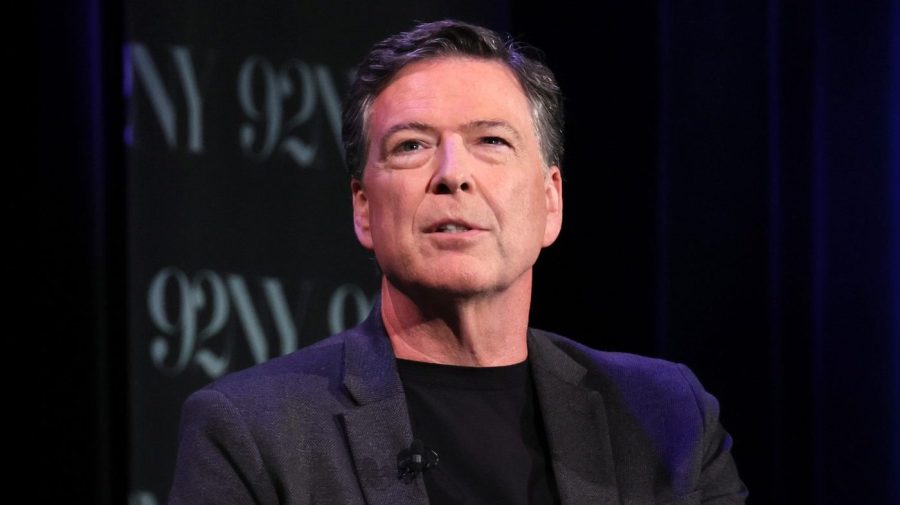
Conservatives are mocking former FBI Director James Comey over a post he made on his Substack on Sunday in which he discussed his admiration for pop superstar Taylor Swift. The post features a video of Comey calling Swift “a truly inspirational public figure” and noting her recent appearance on NFL stars’ Jason and Travis Kelce’s…
Read More
Politics
Trump criticizes ‘fake news,’ Democrat, Zelensky in series of posts
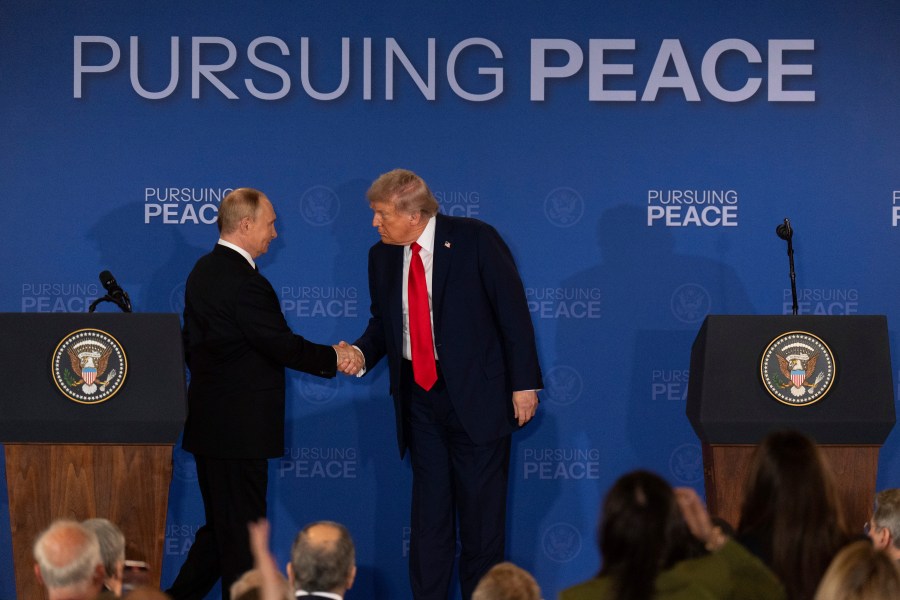
President Trump late Sunday in a pair of posts on Truth Social ripped the media and a prominent Democrat for criticisms of his summit on Friday with Russian President Vladimir Putin. Trump met with Putin in Alaska, and will meet Monday with Ukraine President Volodymyr Zelensky as he seeks to find a way to end…
Read More
-
Uncategorized9 months ago
Bob Good to step down as Freedom Caucus chair this week
-

 The Josh Fourrier Show9 months ago
The Josh Fourrier Show9 months agoDOOMSDAY: Trump won, now what?
-
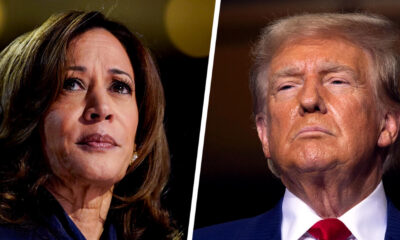
 Politics9 months ago
Politics9 months agoWhat 7 political experts will be watching at Tuesday’s debate
-
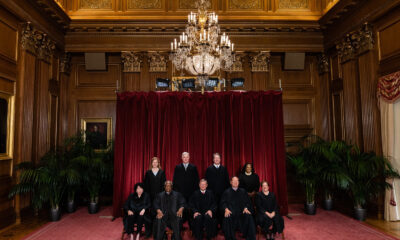
 Politics9 months ago
Politics9 months agoHow Republicans could foil Harris’ Supreme Court plans if she’s elected
-
Economy9 months ago
Fed moves to protect weakening job market with bold rate cut
-
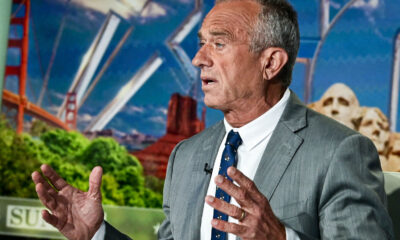
 Politics9 months ago
Politics9 months agoRFK Jr.’s bid to take himself off swing state ballots may scramble mail-in voting
-
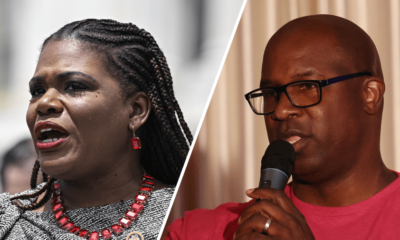
 Politics6 months ago
Politics6 months agoFormer ‘Squad’ members launching ‘Bowman and Bush’ YouTube show
-

 The Dictatorship6 months ago
The Dictatorship6 months agoPete Hegseth’s tenure at the Pentagon goes from bad to worse


